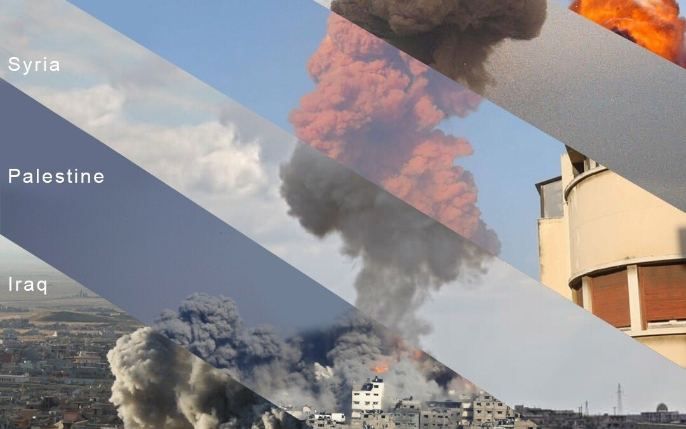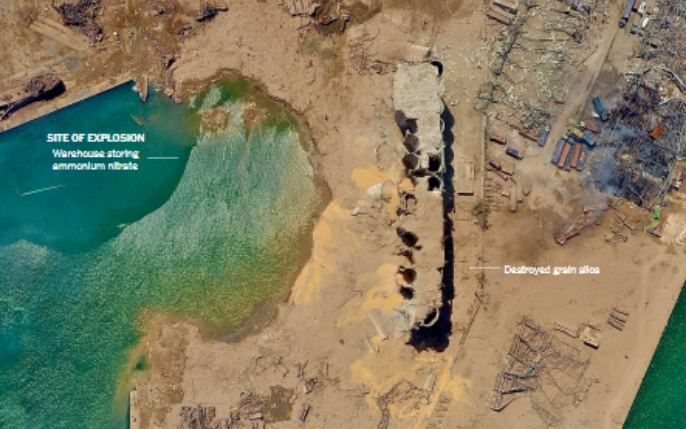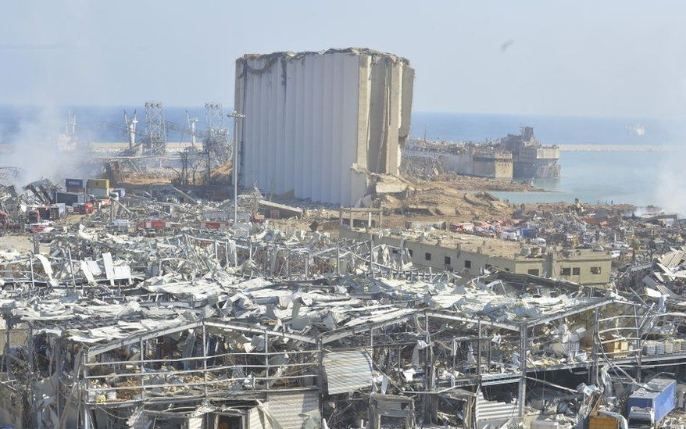PROGRAMS
Join thousands of people who organise
work and life with Novatr.
Resilient Cities: Design Learning From Beirut’s Tragedy
simar kindra
05 mins read
August 14

With the impermanence of today’s cities starkly highlighted, it now becomes more important that we re-evaluate the criteria shaping our society. When we invest so much in creating glass and steel monuments, we must assign to them sufficient degrees of durability that justify the resources we expend on them.
Getting back on their feet

Recent blasts in these middle-eastern countries | Created by Nedal Al Taob Image source: www.twitter.com
A disaster, the magnitude of what Beirut has just been the unfortunate victim of, can pose a serious threat to economic and social development. It can render decades of planning redundant in the mere blink of an eye. Post the disaster, some aspects that architects and planners need to focus on are-
1. Ensuring Medical Facilities: Access to sufficient medical support to help them recover from both the disaster and the global pandemic.
2. Providing Housing: Temporary shelter and long term residential options for those whose homes were destroyed.
3. Rebuilding Public Infrastructure: Allocation of resources towards rebuilding the public domain, clearing of debris and reinforcement of transportation networks.
4. Conservation: The very existence of a lot of Beirut’s cultural art and history has been jeopardized. While the primary needs remain those of providing safety and refuge, the city will soon have to square its shoulders and try to redeem what it can of its very identity that is on the brink of being forgotten.

Mitigation Measures

The site of the explosion; Image source: www.nytimes.com
It is but a universal law that one’s vision in hindsight is always clearer than while looking to the future. So, even if an occurrence such as a foundation-shaking explosion seems more an impossibility than an eventuality, it is always better to still be prepared. We can use our design learning from this experience to ensure that cities are made more resilient and safer. Some basic architectural precautions we could adopt-
1. Factoring in and accounting for the excessive dynamic load that would be exerted on a building’s frame in case of an explosion.
2. Choosing light yet durable materials wherever possible. For eg, instead of glass, one could use laminated glass that is not as prone to shattering.
3. Embedding buildings within the ground so that a major part of their exterior structure is shielded and offered extra durability.
4. Adopting an introverted designing method wherein spaces of a building open into an internal courtyard so that the internal walls facing the courtyard bear the windows and glazings. The external walls, on the other hand, being more vulnerable to explosions, will have lesser openings and, thus, a reduced number of vulnerable points.
5. Planning unobstructed circulation and exit routes to facilitate unhindered emergency evacuations
When it comes to urban planning, there are some aspects we can take into consideration to reduce the vulnerability of a settlement-
1. Land use: Segregation of functions so that paces are grouped according to similarity in functions and separated from other zones. By doing so, a disaster in the zone containing services of a common kind would not affect other adjacent functions that are vital to a settlement’s sustenance. While this may seem to contradict mixed-use development, it is, however, down to the planner to assess the need of the society and choose a concept most suited to its lifestyle.
2. Density: Low-density spaces- with more open areas- allow an explosion to travel faster and farther than high-density spaces. Explosions can be contained to some extent by structures that surround it.
For such effective sustainable solutions that support development, we need a union of architecture and urban design learning to contemporary city planning and re-planning efforts. In doing so, we would be able to devise resilient and innovative solutions to satisfy the spatial requirements of a society.
However, in our endeavor to secure our cities, it is important that the measures we adopt to make them so, do not compromise on their quality. While our designs lean towards reinstating stability, it is also essential that these do not overwhelm a resident and make them feel caged-in. Thus, a balance must be sought and the more delicate aspects that make a space user-friendly must not be sacrificed.
A lesson taught the hard way

Chaos and destruction caused in Beirut after the blast; Image source: www.bbc.com
The aftermath of a crisis is a challenging situation for a society to navigate through. Thus, it is imperative, as a profession, that we not let this tragedy be for naught. We must learn from it and ensure that our cities have a crisis mitigation and management plan in place right from the very start so that no societies in the future need ever be subjected to this degree of destruction again.
Today, Beirut attempts to salvage and rebuild a society up from the rubble of what was once a cultural capital to be reckoned with. Novatr keeps the city and its people in our prayers and wishes for a resilient and sustainable recovery to its former glory.

Join 100,000 designers who read us every month

